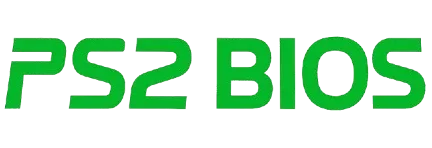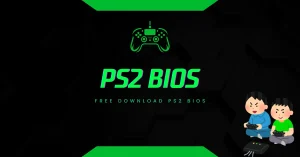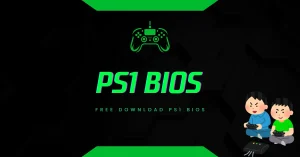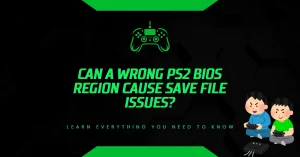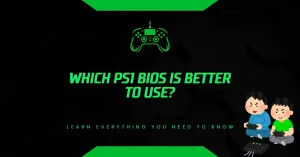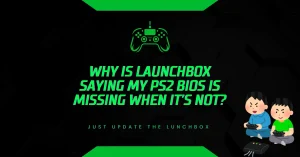Why Do PS2 BIOS Files Have Region Locking Mechanisms?
Have you Tried running a game on your PS2 emulator and it just wouldn’t boot? Chances are, your BIOS file doesn’t match the region of the game. This mismatch causes frustration for many users trying to relive classic titles because PS2 BIOS files include region-based restrictions. But why does this even exist?
The Role of Region Locking in the PS2 BIOS
Region locking is built into the PlayStation 2 BIOS to control what content can be run on the system. The BIOS short for Basic Input/Output System is a core part of the PS2’s internal software. It’s responsible for starting up the console, loading discs, and managing system-level settings. Think of it like the PS2’s brain.
However, that brain doesn’t treat all games equally. The reason? Regional control.
Region Locking: A Quick Breakdown
The PS2’s BIOS checks the region code of any disc that’s inserted. If the disc doesn’t match the console’s region, it refuses to load. This isn’t a technical flaw it’s a deliberate restriction placed by Sony and game publishers.
Here’s why that exists:
1. Enforcing Copyright Rules
The PS2 BIOS is copyrighted software. It’s built to follow the rules set by Sony and game makers. Region locking helps control where and how games are used, especially when companies want different release dates or pricing in different parts of the world.
2. Licensing Agreements Between Publishers
Game publishers often make region-based licensing deals. For example, a developer might license a game for Europe but not for North America. Region locking in the BIOS enforces this making sure only users in the licensed region can play that game.
- North American consoles won’t run Japanese games.
- PAL games from Europe won’t work on NTSC-based consoles from the US.
- A Chinese BIOS won’t run European discs.
This isn’t about hardware limits it’s about business contracts.
What Are the Main PS2 Regions?
The PS2 is officially divided into four main regions:
- NTSC-U – United States and Canada
- PAL – Europe, Australia, and some parts of Asia
- NTSC-J – Japan and some other Asian markets
- NTSC-C – China-specific market
Each BIOS is tied to one of these zones. When a game boots, the BIOS checks for a matching region code. If it doesn’t match, the game won’t run. This applies to both physical discs and ISO files used in emulators.
DVD Playback Is Also Region Locked
Region locking on the PS2 isn’t just for games. It also affects DVD movie playback. Just like with games, DVDs are divided into six global regions. The PS2 BIOS checks DVD region codes, and mismatches result in playback failure.
So even if you’re only using your PS2 to watch movies, the region still matters. A European PS2 won’t play American DVDs unless you modify the system.
Why This Matters for Emulators Like PCSX2
When using a PS2 emulator like PCSX2, the BIOS file you load must match the game region. If you load a PAL BIOS but try to run an NTSC-U game, it might:
- Show a black screen
- Freeze on boot
- Display error messages
- Fail to load system menu
That’s because emulators work by mimicking the behavior of the actual PS2. They rely on the BIOS to handle region checks just like real hardware does.
Tip: If you want to play games from multiple regions, you’ll need multiple BIOS files one for each region and switch between them as needed in the emulator settings.
Can You Remove Region Locking?
On official consoles, removing region locking means modifying the system. This is usually done using:
- Modchips
- Boot discs
- Softmodding methods
These methods bypass BIOS checks, but they come with risks like system damage or legal issues.
In emulators, however, it’s easier. PCSX2 allows manual BIOS selection, and some advanced users patch games or use no-region hacks. But these approaches may cause compatibility issues, especially if the emulator version is outdated.
Final Thoughts: Why Region Locking Exists
Region locking in PS2 BIOS files isn’t random or accidental. It’s a direct result of copyright protection, international licensing contracts, and market control strategies. While frustrating for gamers who want to explore global titles, it served its purpose in managing game distribution during the PS2’s prime.
Today, understanding how regional BIOS files work especially in emulators helps you avoid wasted time and black screens. Always match your BIOS to your game’s origin, and you’ll get a smoother experience with fewer errors.
Whether you’re using PCSX2 on a modern device or working with original hardware, respecting these built-in region checks is key to proper setup.
- Why Does AetherSX2 Say “Missing BIOS” Even After Adding It? - September 23, 2025
- How Do Developers Test Emulators Without Using BIOS Files? - September 23, 2025
- Can You Transfer a PS2 BIOS Between Different Consoles? - September 23, 2025
